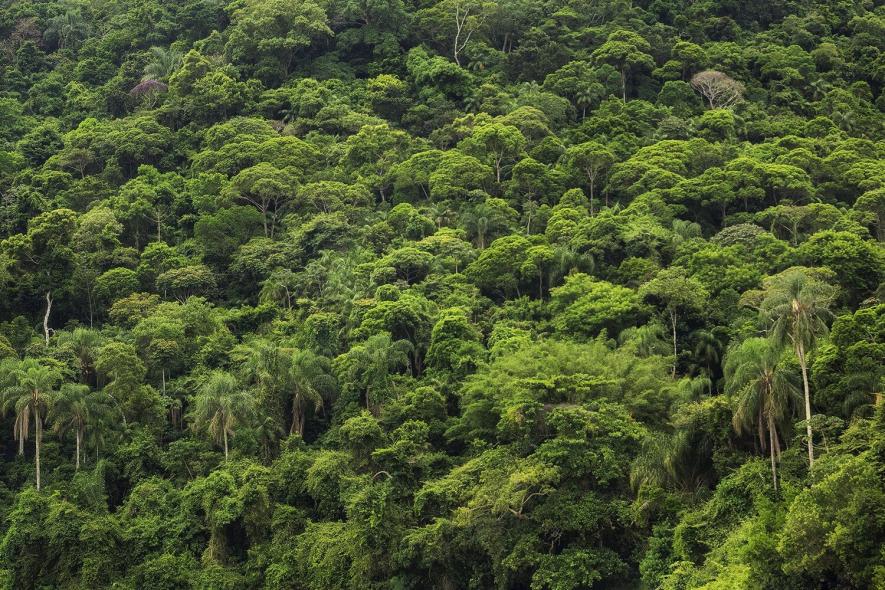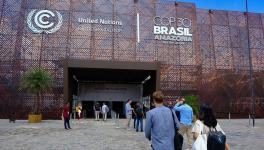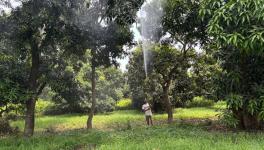Is the Amazonian Forest No More a Sink for Carbon Dioxide?

Image Courtesy: Shutterstock
Plants clear off carbon dioxide from the environment, absorbing it for photosynthesis. Plants are considered a ‘land carbon sink’ and it has been estimated that trees have absorbed about 25% of the fossil fuel emissions since the 1960s, contributing to offsetting the global warming to a significant extent.
Tropical forests have been the most abundant component of this land carbon sink. Amazonian forests, being the largest existing tropical forest, contribute greatly to the carbon sink.
A latest research has found that an alarming situation is on the rise in the Amazonian forests. A study published in the Nature on July 14 revealed that western Amazonia is relatively a weak carbon sink. However, a more concerning fact is that in the eastern Amazonia, deforestation and warming have degraded its carbon absorbing capacity, or even have reversed the uptake of carbon by the forest. The study was led by Luciana V. Gatti, General Coordination of Earth Science, National Institute for Space Research, Brazil.
For decades, carbon has been accumulating in the Amazonian forests. However, the past few years have seen a threat to the carbon sinks of the forest due to deforestation combined with forest degradation, progressive drying of the climate and massive fires. Although studies have ascertained the man made contributions in reducing the Amazonian forests’ carbon sinking capacity, it is still a difficult task to measure directly what is the local carbon balance (carbon balance is the difference between uptake of carbon dioxide by ecosystems and carbon dioxide released to the atmosphere) of Amazonian ecosystems. These forests are still the most difficult regions of world to access. Another aspect is that the Amazonian forests have a wide variety of ecosystems and this makes it hard to extrapolate locally available data to whole region.
In earlier research, satellite measurements have revealed that the carbon balance of the Amazonian forests is very sensitive to drought and fire. Also, this region is covered by cloud persistently, which further complicates collection of such data.
Gatti and colleagues have measured the atmosphere in four regions of Amazonia for a period of nine years. They used aircraft for collecting air samples from near the surface and up till an altitude of about 4.5 kilometres in each of the regions they investigated. By analysing the samples, the researchers produced a vertical profile of concentrations of different gases, which include carbon dioxide and carbon monoxide. They produced 590 such vertical profiles, twice a month in each of the regions.
Gatti’s team also used data from several remote islands around the South Atlantic Ocean to establish a background of the concentrations of gases. They did this to compute spatial concentration difference of carbon dioxide and carbon monoxide between the background areas and the four regions of Amazonia. They analysed the data through different seasons and years to determine the spatial patterns of carbon dioxide and carbon monoxide concentration variations in the regions. And finally, the team estimated regional carbon flux linked to the growth and decay of forests and the carbon emissions caused by fires.
The northwestern Amazonian region was found to have a carbon balance in the period of the study, that is, carbon take up by plants equals to carbon emissions. This region is wetter almost all the times.
However, in the eastern and southern Amazonian, the researchers found a concerning fact. These regions, unlike the northwestern part of the Amazon, do not remain wet all the times, they have periodical dry spells. The researchers found that dry seasons (when rainfall is below 100 millimetres a month) get progressively longer, in some cases lasting for over five months as the forests turn into savannah. During the wet seasons, the northeastern and southeastern parts of the Amazon remain close to carbon balance, but during the dry spells, the carbon balance shifts more towards carbon release than carbon absorption. This trend was found in the yearly data during the period of the study.
The shift of the eastern Amazon forests from a carbon sink to a carbon source during the dry spells is linked to strong regional warming. Over the past 40 years, the eastern Amazon region has warmed about 0.6 degree Celsius per decade. Warningly, this rate is three times the rate of global warming. Gatti and the team conclude that the warming rates of dry spells in eastern Amazon may have been accelerated by growing deforestation combined with forest degradation, all due to human activities.
The researchers documented the fast transition of the carbon sink to carbon source based upon directly measuring large scale concentration gradients of atmospheric gases. The pattern of deforestation, lengthy and warmer dry spells, drought stress and fires have threatened the carbon sink seriously, which may have consequences for future sequestration of carbon dioxide by tropical forests.
The new finding adds to the growing body of research on climate change and deforestation. For decades, the absorption of fossil-fuel emissions by land ecosystems has remained nearly constant, even when the emissions have increased. High-latitude forests have been accumulating carbon as a result of lengthening the growing season, which is a result of the climate change. The forests at the mid latitude also have behaved similarly, because of increase in their nutrients (like carbon dioxide for photosynthesis).
On the contrast, the regional profiling of tropical forests, as exemplified in the work of Gatti’s team, shows that the carbon sink is greatly threatened by deforestation, forest degradation and increased warming.
Get the latest reports & analysis with people's perspective on Protests, movements & deep analytical videos, discussions of the current affairs in your Telegram app. Subscribe to NewsClick's Telegram channel & get Real-Time updates on stories, as they get published on our website.
























